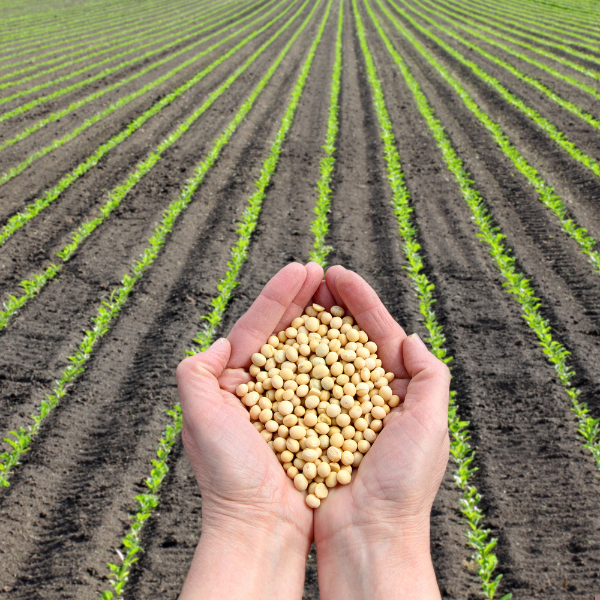
India faces significant post-harvest losses, with estimates suggesting around 74 million tonnes of food lost annually, impacting both the economy and food security. Modern storage methods, such as cold storage, silos, and hermetic storage, offer promising solutions by extending shelf life and reducing spoilage. However, their implementation faces hurdles like high costs and lack of awareness, especially among smallholder farmers. This article explores how these methods can help, supported by data, and discusses the challenges and potential ways forward.
Impact of Modern Storage
Modern storage methods, including cold storage facilities and steel silos, have shown significant potential in reducing post-harvest losses. For instance, hermetic storage has reduced paddy losses in similar contexts, and studies suggest a 98% reduction in food loss with improved practices. In India, initiatives like the government’s plan to expand storage capacity by 70 million metric tons (MMT) with an investment of Rs. 1.25 trillion over five years aim to address this, particularly for perishables like fruits and vegetables, which face losses of 19% and 18%, respectively.
Challenges and Considerations
Despite these benefits, challenges persist. High costs make modern storage inaccessible for many smallholder farmers, who constitute over 80% of India’s farming community. Inadequate infrastructure, such as poor road networks and lack of refrigerated transport, exacerbates transit losses. Additionally, lack of awareness and training on these methods, along with fragmented supply chains, hinders adoption, especially in rural areas.
Detailed Analysis of Modern Storage and Post-Harvest Losses in India
Introduction and Context
India, ranking second globally in agricultural production, faces a paradoxical challenge: while it produces vast quantities of food, significant post-harvest losses undermine food security and economic potential. Post-harvest losses, defined as the degradation in quantity and quality from harvest to consumption, are estimated at 20-30% across various stages, with an annual economic loss of Rs. 1.53 trillion (USD 18.5 billion) as per a 2022 NABCONS study. These losses are particularly severe for perishable commodities, with fruits losing 19% and vegetables 18% annually (ICAR, 2022-23). This survey note explores how modern storage methods can mitigate these losses, supported by data and statistics, while addressing implementation challenges.
The Scale of Post-Harvest Losses
Post-harvest losses occur at multiple stages, as detailed in the following table based on recent studies:
| Stage | Loss Percentage Range | Example Data |
| Farmer’s Field | 15-20% | – |
| Packaging | 15-20% | – |
| Transportation | 30-40% | Transit losses at 0.22% as of 2021-22 |
| Marketing | 30-40% | – |
Specific crop losses include:
- Soybean: 15.34%
- Wheat: 7.87% (with 2.27% quality loss)
- Paddy: 6.37%
- Maize: 5.95%
- Cereals overall: 4.44% (higher than China’s 2.22%)
The Food Corporation of India (FCI) reported grain management losses of 0.41 MMT over the last four years, equating to an economic loss of Rs. 11.09 billion (ICRIER, 2024). These figures highlight the urgency of addressing losses, especially given India’s ranking of 105th out of 127 on the Global Hunger Index, with 14% undernourished and 35.5% of children under five stunted (National Economic Forum, 2025).
Modern Storage Methods and Their Impact
Modern storage methods leverage advanced technologies to preserve agricultural produce, reducing spoilage and extending shelf life. Key methods include:
- Cold Storage Facilities:
- Critical for perishables, cold storage slows ripening and prevents spoilage. However, India’s current capacity is insufficient, contributing to high spoilage rates, especially during peak seasons.
- Silos:
- Steel silos, more efficient than traditional Cover and Plinth (CAP) storage, use one-third the space of conventional warehouses and reduce labor costs via semi-automation. As of September 2023, 14% of a 10 MMT target capacity has been met, with the government planning to expand by 70 MMT through an investment of Rs. 1.25 trillion over five years via Primary Agricultural Credit Societies (PACS) (ICRIER, 2024).
- Hermetic Storage:
- Airtight systems like hermetic bags prevent pest infestation and moisture damage. A Bangladesh case study showed significant reduction in paddy losses, suggesting potential for India (Alam et al., 2022, Hermetic Storage Technology).
- Warehouse Receipt System (WRS):
- Enables farmers to store produce in modern warehouses and use receipts for loans, maintaining quality standards and reducing losses due to improper storage.
- Transportation Advancements:
- Refrigerated trucks and improved logistics minimize transit losses. Currently, 97% of fruits and vegetables are transported by road, which is less efficient and prone to delays compared to rail (Officers Pulse, 2024).
The impact of these methods is evident in case studies. For instance, the Private Entrepreneurs Guarantee Scheme (PEG, 2008) approved 18.9 MMT of storage capacity, with 14.6 MMT completed as of October 31, 2023 (ICRIER, 2024). The Adani Agri Logistics Limited (AALL) in Moga, Punjab, operates a 0.2 MMT capacity unit with silos, demonstrating private sector potential. Additionally, a World Food Programme study in Uganda and Burkina Faso showed a 98% reduction in food loss with improved storage practices, suggesting similar potential for India (PMC, 2017).
Economic and Social Implications
Reducing post-harvest losses has significant economic benefits, potentially adding INR 1,52,000 Cr to the economy annually. It also enhances food security, addressing malnutrition, especially given 190 million undernourished individuals (National Economic Forum, 2025). Socially, it supports smallholder farmers, who are disproportionately affected, by improving incomes and reducing inequality. However, current losses waste resources like water, labor, and energy used in production, exacerbating environmental and social challenges.
Challenges in Implementation
Despite their potential, several barriers hinder the adoption of modern storage methods:
- High Costs:
- Modern storage solutions are expensive, making them inaccessible for smallholder farmers, who constitute over 80% of India’s farming community.
- Inadequate Infrastructure:
- Poor road networks and lack of refrigerated transport options increase transit losses, with 97% of produce transported by road (Officers Pulse, 2024).
- Lack of Awareness and Training:
- Many farmers lack knowledge of modern storage techniques, limiting adoption, especially in rural areas.
- Fragmented Supply Chains:
- Multiple handling points and inefficient logistics increase spoilage risks during transportation and distribution.
- Policy and Regulatory Hurdles:
- Delays in policy implementation and bureaucratic red tape slow infrastructure development.
- Lack of Data and Traceability:
- Traceability issues and unclear data on loss points make targeted interventions difficult (Food Forward NDCs, 2024).
These challenges are particularly acute for small farmers, who face greater losses compared to larger agribusinesses due to limited access to modern solutions (PWOnlyIAS, 2024).
Way Forward: Recommendations
To overcome these challenges, a multi-pronged approach is necessary:
- Government Support: Increase investment in storage infrastructure, provide subsidies for small farmers, and expand public-private partnerships, as seen in PEG and PACS initiatives.
- Education and Training: Launch programs to educate farmers on modern storage benefits, collaborating with agricultural universities and Krishi Vigyan Kendras.
- Research and Development: Invest in technologies tailored to Indian conditions, supporting agritech startups through state governments (Mongabay India, 2024).
- Improved Logistics: Upgrade transportation infrastructure, including refrigerated trucks and rail, to reduce transit losses.
- Policy Reforms: Streamline policies to facilitate adoption, addressing regulatory hurdles.
By addressing these areas, India can transform its agricultural sector, ensuring produce reaches consumers efficiently and effectively, enhancing food security and farmer livelihoods.

Leave a Reply